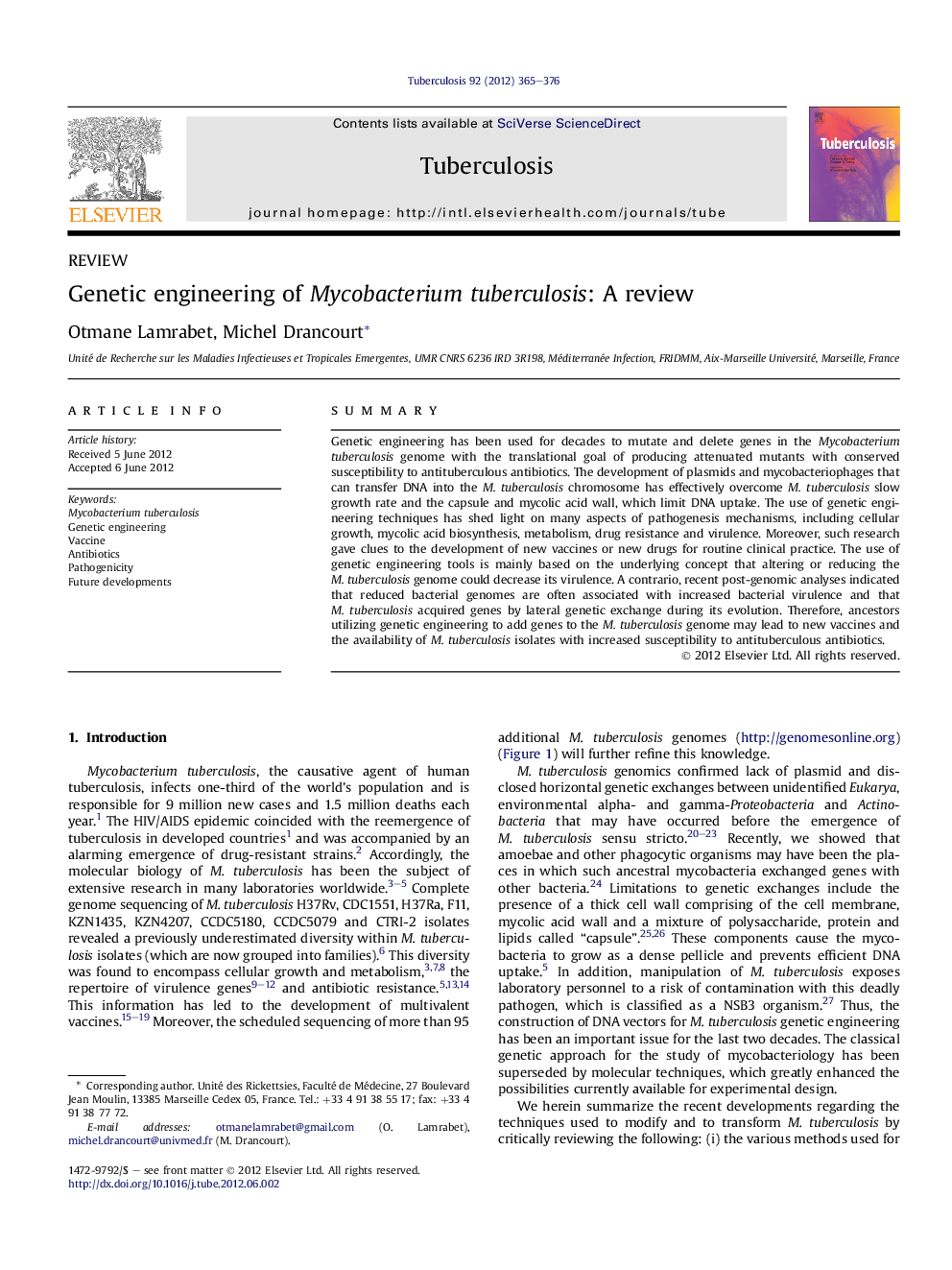| کد مقاله | کد نشریه | سال انتشار | مقاله انگلیسی | نسخه تمام متن |
|---|---|---|---|---|
| 2401516 | 1102345 | 2012 | 12 صفحه PDF | دانلود رایگان |

SummaryGenetic engineering has been used for decades to mutate and delete genes in the Mycobacterium tuberculosis genome with the translational goal of producing attenuated mutants with conserved susceptibility to antituberculous antibiotics. The development of plasmids and mycobacteriophages that can transfer DNA into the M. tuberculosis chromosome has effectively overcome M. tuberculosis slow growth rate and the capsule and mycolic acid wall, which limit DNA uptake. The use of genetic engineering techniques has shed light on many aspects of pathogenesis mechanisms, including cellular growth, mycolic acid biosynthesis, metabolism, drug resistance and virulence. Moreover, such research gave clues to the development of new vaccines or new drugs for routine clinical practice. The use of genetic engineering tools is mainly based on the underlying concept that altering or reducing the M. tuberculosis genome could decrease its virulence. A contrario, recent post-genomic analyses indicated that reduced bacterial genomes are often associated with increased bacterial virulence and that M. tuberculosis acquired genes by lateral genetic exchange during its evolution. Therefore, ancestors utilizing genetic engineering to add genes to the M. tuberculosis genome may lead to new vaccines and the availability of M. tuberculosis isolates with increased susceptibility to antituberculous antibiotics.
Journal: Tuberculosis - Volume 92, Issue 5, September 2012, Pages 365–376